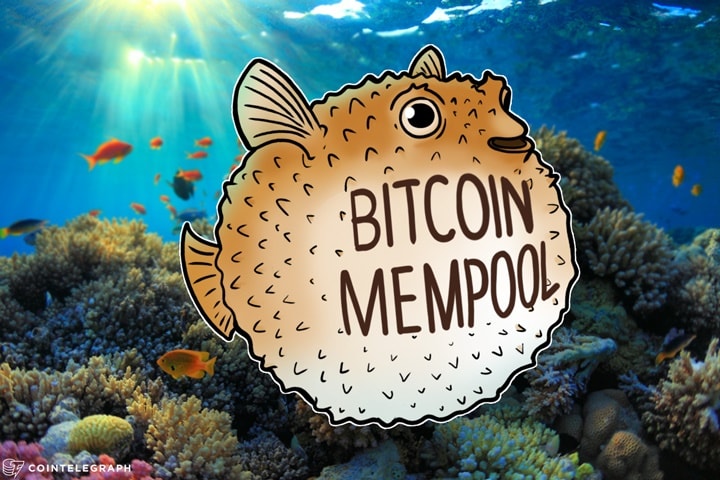With the daily trading volume of Bitcoin at an all-time high, at around $20 bln across major regions, the mempool of the Bitcoin Blockchain has started to expand again.
Bitcoin mempool size spikes, transaction fees increase
In Bitcoin, the mempool operates as a holding area for unconfirmed transactions. Payments made by users await in the mempool until miners arrive to confirm the transactions. The size of the Bitcoin mempool, which remains at around 79 mln bytes at the time of reporting, represents the aggregate size of transactions waiting to be confirmed.
If the size of the Bitcoin mempool is high, transaction fees recommended by wallet platforms such as Blockchain, Coinbase and Trezor surge and failing to attach high fees could result in a transaction being delayed for many days, if the Bitcoin mempool does not clear.
On Dec. 7, the size of the Bitcoin mempool reached 120 mln bytes, spiking by more than two-fold within a 24-hour span. As a consequence, transaction fees of Bitcoin recommended by wallets surged up to $30, depending on the size of the transaction and the number of inputs or outputs.

Bitcoin Fees, a Bitcoin fee predicting application on Earn.com, previously known as 21 Inc, currently recommends a fee of 450 satoshis per byte for median-size transactions, resulting in a fee of 101,700 satoshis. In US dollars, the recommended fee of Bitcoin Fees for median-size transactions is $16.
“Suspicious behavior” in the Bitcoin mempool
Nic Carter, an experienced Bitcoin analyst and researcher, stated that the abrupt surge in the size of the Bitcoin mempool is suspicious, given that many one satoshi per byte transactions clogged up the mempool and the Bitcoin Blockchain network.
Carter suggested that a spam attack of low-fee transactions is preventing the Bitcoin Blockchain network from clearing transactions and processing payments.
Suspicious behavior in the Bitcoin mempool again. Be on your guard this weekendhttps://t.co/8MIPUW0Cxw pic.twitter.com/npMXjHP4Ma
— Nic Carter (@nic__carter) December 9, 2017
But, others also claimed that it is possible the recent performance of Bitcoin price has led to a genuine increase in the Bitcoin network’s daily transaction volume, and that the size of the mempool has expanded drastically because of the rapid growth rate of Bitcoin.
Are fees too high?
For small to medium-size transactions, the current Bitcoin transaction fees could be too high, especially for merchants. As such, Steam, one of the most popular game marketplaces, temporarily stopped accepting Bitcoin as a payment method due to increasing complaints from its users with Bitcoin’s high transaction fees.
For large-scale transactions worth at least a thousand dollars to millions of dollars, a transaction fee of over $10 is not relatively high compared to the global banking system. As Ari Paul, the co-founder of BlockTower explained in an interview with Business Insider, if Bitcoin’s current use case is a robust store of value and it is trying to compete against gold and the international offshore banking industry, high transaction fees could still be dealt with, considering the complexity and efficiency of banking services.
Still, for Bitcoin merchants, specifically the tens of thousands of Bitcoin-accepting merchants in Japan, the current Bitcoin transaction fees could be difficult to handle.


